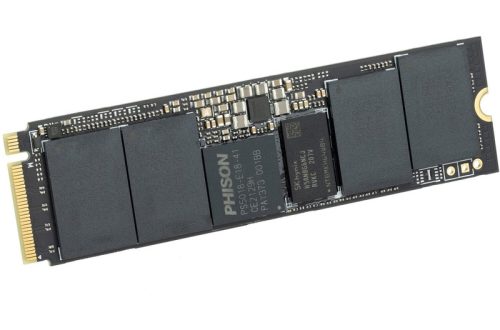Artificial intelligence has had a profound impact on the field of robotics in recent years. The integration of AI technologies has enabled robots to become smarter, more efficient, and more adaptable in a variety of applications. From manufacturing to healthcare to agriculture, AI-powered robots are revolutionizing the way we work and live. In this article, we will explore the ways in which AI is unleashing innovation in robotics and shaping the future of these technologies.
Part 1: Increased Efficiency and Productivity
1.1 Advanced Problem-Solving Capabilities
One of the most significant advancements in robotics has been the integration of artificial intelligence (AI). AI-powered robots are capable of solving complex problems in real-time, far surpassing the capabilities of traditional robotic systems. By leveraging advanced algorithms and machine learning techniques, these robots can analyze vast amounts of data, identify patterns, and make informed decisions with remarkable speed and accuracy. This has enabled them to perform tasks that were previously considered too difficult or time-consuming for human operators, leading to increased efficiency and productivity across various industries.
1.2 Enhanced Precision and Accuracy
AI has also revolutionized the precision and accuracy of robotic systems. Through technologies such as computer vision and natural language processing, AI-powered robots can better understand and interact with their environment. This enables them to perform tasks with incredible precision, reducing errors and optimizing performance. For example, in manufacturing, AI-powered robots can assemble components with a level of accuracy that was previously unattainable. This has led to significant improvements in product quality and consistency, as well as reduced waste and increased productivity.

Part 2: Adaptability and Flexibility
One of the most significant advancements in robotics has been the development of autonomous navigation capabilities. AI-powered robots can now navigate and operate independently in dynamic environments, thanks to the integration of sensors and sophisticated algorithms.
These robots can perceive and understand their surroundings, making real-time decisions to adapt to changing conditions. This autonomy has enabled robots to work in a wide range of settings, from busy warehouses to unpredictable outdoor environments, without constant human supervision.
Autonomous navigation has numerous applications, including search and rescue operations, agriculture, and logistics. For example, autonomous drones can be used to inspect infrastructure, monitor crops, and deliver packages, while autonomous robots can assist in search and rescue missions.
2.2 Customization and Personalization
AI has also enabled robots to become more adaptable and personalized. By analyzing data and learning from past interactions, robots can tailor their actions to meet the unique needs of each situation. This level of customization has wide-ranging implications, from personalized healthcare and rehabilitation to on-demand manufacturing and logistics.
In healthcare, AI-powered robots can be customized to assist with specific medical procedures, such as surgery or rehabilitation therapy. In manufacturing, robots can be adapted to produce highly specialized products, meeting the demands of niche markets. And in logistics, robots can be customized to optimize delivery routes and improve efficiency. With AI, robots can be tailored to perform highly specialized tasks that were previously impossible, revolutionizing industries and improving our quality of life.
Part 3: Collaboration and Safety
3.1 Human-Robot Collaboration
One of the most promising developments in robotics is the increasing focus on human-robot collaboration. Engineers are designing AI-powered robots to work alongside humans, rather than simply replacing them. By leveraging AI technologies such as computer vision and natural language processing, robots can better understand human behavior, intentions, and even emotions. This allows for safer and more efficient collaboration in various work environments.
Human-robot teamwork has the potential to revolutionize industries such as healthcare, construction, and logistics. In healthcare, robots can assist with tasks such as surgery, rehabilitation, and patient care, freeing up human healthcare professionals to focus on more complex and empathetic tasks. In construction, robots can work alongside human workers to perform repetitive or dangerous tasks, improving safety and efficiency. And in logistics, robots can collaborate with human workers to optimize warehouse operations and improve delivery efficiency.

3.2 Enhanced Safety Features
Enhanced Hazard Detection and Response
AI has revolutionized the safety of robotic systems by enabling them to better detect and respond to potential hazards in their environment. Through the integration of AI-powered sensors and algorithms, robots can now perceive their surroundings with greater accuracy and identify potential risks in real-time. This has led to a significant reduction in workplace accidents and injuries, making it safer for humans to work alongside robots.
For instance, AI-powered robots can use computer vision to identify obstacles or potential hazards in their path, allowing them to adjust their movements or halt operations to avoid accidents. Additionally, AI can enable robots to detect and respond to changes in their environment, such as variations in temperature, humidity, or lighting conditions, which can affect their performance and safety.
Real-time Adaptation for Safe Operation
One of the most significant advantages of AI in robotics is its ability to enable robots to adapt their behavior in real-time. By analyzing data and learning from past experiences, robots can identify potential risks and adjust their actions accordingly. This adaptability is crucial for ensuring safe and reliable operation in dynamic and unpredictable environments.
For example, if a robot encounters an unexpected obstacle or change in its environment, AI can enable it to quickly recalculate its route or adjust its actions to avoid collisions or other hazards. This level of adaptability is essential for safe and efficient human-robot collaboration, as it allows robots to respond to unforeseen circumstances and minimize risks.

Part 4: Future Challenges and Opportunities
4.1 Ethical and Social Implications
The rapid advancement of AI-powered robotics has raised important ethical and social considerations. As robots become more capable, there is growing concern about their impact on the job market, as automation could lead to job displacement. Additionally, the ethical use of AI in warfare and other sensitive areas raises significant questions. There are also concerns about the potential for AI-powered robots to replace human roles in various aspects of life, from healthcare to customer service.
To address these challenges, it is essential for policymakers, industry leaders, and researchers to engage in meaningful dialogue and develop appropriate guidelines and regulations. This will help to ensure that AI-powered robotics is used responsibly and ethically, benefiting society as a whole.
4.2 Continued Innovation and Collaboration
Despite the challenges and complexities surrounding AI-powered robotics, the future looks promising. Continued innovation in AI technologies, such as deep learning and reinforcement learning, will unlock new capabilities for robots and further expand their potential applications. As AI algorithms become more sophisticated, robots will be able to perform tasks with greater autonomy, precision, and intelligence.
Collaboration between different industries and the academic community will also be crucial in driving advancements in AI-powered robotics. By working together, researchers, engineers, and industry leaders can share knowledge, resources, and expertise to accelerate the development of new technologies and applications. This collaborative approach will ensure that AI-powered robotics benefits society and addresses pressing global challenges.
In conclusion, the integration of AI in robotics has opened up a world of possibilities, transforming robots from mere machines into intelligent and adaptive systems. From increasing efficiency and productivity to enabling collaboration and safety, AI has unleashed innovation in robotics like never before. As the technology continues to evolve, it is essential to cultivate responsible and ethical application of AI in robotics, while also embracing the boundless opportunities for advancement and collaboration. The future of AI-powered robotics is bright, and the potential for positive impact on various industries and society as a whole is truly exciting.




